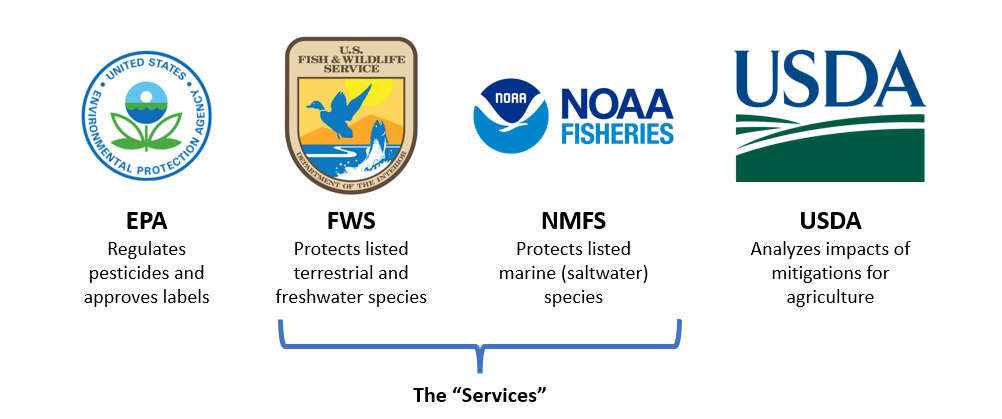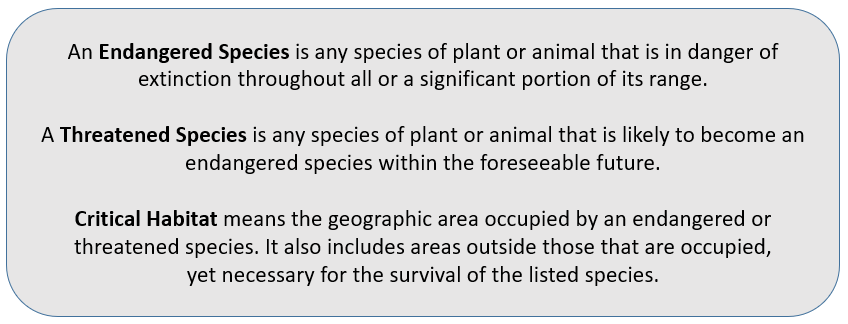The Endangered Species Act (ESA) of 1973 is a federal law that requires government agencies such as the Environmental Protection Agency (EPA) to ensure any “actions” they take do not jeopardize endangered or threatened plants and animals (also known as “listed” species). When the EPA proposes an action such as the registration/reregistration of a pesticide that might affect a listed species or its (critical) habitat, they must consult with the agencies responsible for the ESA; the U.S. Fish and Wildlife Service (terrestrial and freshwater aquatic species) or the National Marine Fisheries Service/NOAA Fisheries (marine species including those that migrate to freshwater to spawn). This is known as “a consultation” with “the Services.” If the consultation process finds that a pesticide may adversely affect endangered species, the EPA requires pesticide applicators to implement mitigation measures to protect those species. Depending on the active ingredient, the measures and restrictions could impact all pesticide end-users because every county in the US has at least one of the nearly 1,700 plants and animals considered endangered or threatened species nationally. For counts of ESA-listed species in your state–by county–click here.
If the consultation process finds that a pesticide may adversely affect endangered species, the EPA requires pesticide applicators to implement mitigation measures to protect those species. Depending on the active ingredient, the measures and restrictions could impact all pesticide end-users because every county in the US has at least one of the nearly 1,700 plants and animals considered endangered or threatened species nationally. For counts of ESA-listed species in your state–by county–click here.
Although the Endangered Species Act was passed in 1973, the EPA has failed to make the required effects determination and consult with the Services for a majority of its registration decisions. Over the past two decades, lawsuits and the threat of additional litigation led the EPA to announce its renewed commitment to comply with the ESA. To document these efforts, the EPA is developing/has developed “Strategies” that serve as the framework for new application requirements on pesticide labels. These final protections will secure pesticide registrations from litigation and provide farmers and applicators with reliable access to the pesticides they need.
For more information on the history of EPA’s implementation of the ESA see: McGaughey, B. & S. Culpepper. 2023. FIFRA and the ESA: Finding a Balance between Agricultural Efficiency, Environmental Sustainability, and Regulatory Stability. A Council for Agricultural Science and Technology (CAST) publication or watch the webinar.
Access the “EPA’s Workplan and Progress Toward Better Protections for Endangered Species” here.
